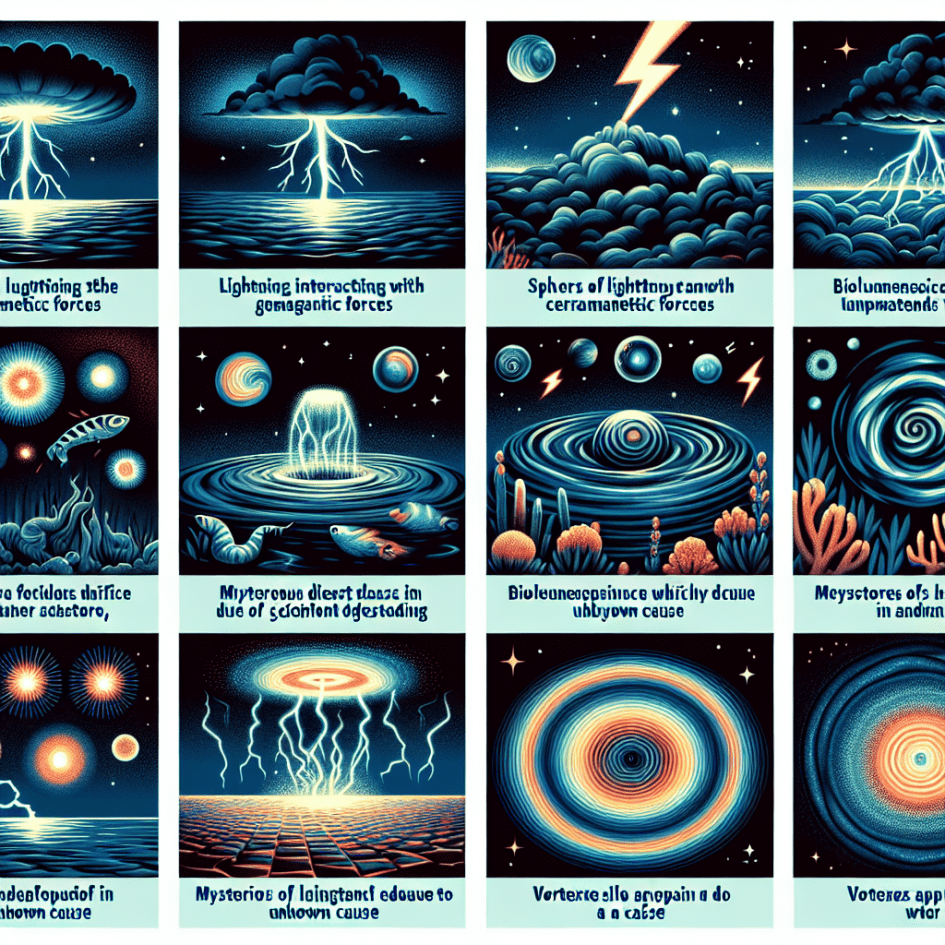Mysterious Natural Phenomena That Leave Scientists Baffled
From the deep blue oceans to the vast, open skies, our planet presents us with countless wonders. Some leave us awe-struck, while others leave us scratching our heads. Today, we dive into some of the most enigmatic natural phenomena that continue to baffle even the brightest scientific minds. Grab your explorer hat, and let’s embark on this mystifying journey!
The Taos Hum: An Unseen Enigma
Imagine living in a sleepy town where an inexplicable low-frequency hum silently invades your life. For the residents of Taos, New Mexico, this isn’t a figment of imagination—it’s their reality. Dubbed the “Taos Hum,” this sound is audible to only about 2% of the town’s population, causing unease and discomfort.
Multiple theories exist, ranging from natural geological activities to secret military operations, but none have been conclusively proven. While some opt to call it a “mass hysteria,” the fact remains: the Taos Hum is a genuine phenomenon, and it keeps scientists on their toes.
The Sailing Stones of Death Valley
As if the name “Death Valley” wasn’t eerie enough, it houses one of the most puzzling natural phenomena: the Sailing Stones. In Racetrack Playa, heavy rocks mysteriously move across the dry lake bed, leaving long tracks behind them. Despite weighing up to hundreds of pounds, these stones appear to glide effortlessly.
In 2014, researchers captured this motion in action, revealing that it occurs under specific conditions involving thin layers of ice and strong winds. While the mystery of their movement is somewhat explained, the eerie visuals and the specific conditions required to see this phenomenon continue to marvel scientists and tourists alike.
Ball Lightning: A Luminous Puzzle
If you thought lightning striking twice was impressive, wait until you hear about Ball Lightning. Witnesses describe it as glowing, spherical objects that appear during thunderstorms, lasting longer than typical lightning flashes. They hover, float, and can even pass through walls without causing damage.
This phenomenon has been so elusive that for the longest time, it was considered myth. However, recent studies provide some scientific backing, suggesting that it could be the result of complex interactions of plasma and electromagnetic fields. The exact mechanics, though, remain unclear and continue to spark intrigue and further research.
The Hessdalen Lights: Norway’s Alien Light Show?
Tucked away in the picturesque Norwegian valley of Hessdalen, a mysterious light show has baffled scientists and enthusiasts since the 1930s. Known as the Hessdalen Lights, these luminous orbs appear sporadically, hovering, zipping around, or splitting into smaller parts before disappearing.
Several research expeditions have attempted to decode these anomalies, with theories ranging from ionized dust particles to piezoelectricity. Yet, no single explanation holds up in all observed cases. UFO enthusiasts might argue it’s alien activity, but for now, the Hessdalen Lights remain one of Earth’s fascinating, unsolved riddles.
If you want to dive deeper into this, here’s an intriguing YouTube video about the Hessdalen Lights.
Morning Glory Clouds: Nature’s Transient Masterpiece
Picture this: You wake up early one morning in Northern Australia, and you see a gigantic tube-shaped cloud stretching across the horizon. This is not an image from a sci-fi movie but a rare and magnificent weather phenomenon known as Morning Glory Clouds.
These clouds can extend up to 1,000 kilometers and occur most commonly in the Gulf of Carpentaria. Despite extensive meteorological studies, scientists are still not entirely sure how they form. The most accepted theory involves a combination of sea breezes, moisture, and specific atmospheric conditions. These elusive clouds remain a sight to behold and a riddle waiting to be fully untangled.
Blood Falls: Antarctica’s Red Secret
Antarctica is home to numerous mysteries, but none as eye-catching—and somewhat unsettling—as Blood Falls. Discovered in 1911, this crimson-colored waterfall pours from the Taylor Glacier into the icy Lake Bonney. The hue is so red; it appears as though the glacier is bleeding.
Scientists have identified that the blood-red color is due to high concentrations of iron oxide. But the real curiosity lies in the subglacial lake’s microbial ecosystem, which manages to thrive in extreme conditions devoid of sunlight and oxygen. Blood Falls offers a tantalizing glimpse into how life might exist in similar extreme conditions elsewhere in the universe.
Conclusion
The Earth is a treasure trove of mysteries, some of which are yet to be solved. From inexplicable sounds to magical light displays and moving stones, these phenomena make our planet endlessly fascinating. While scientists continue to probe and theorize, these natural enigmas serve as a reminder that we still have much to learn about the world around us. If these mysteries piqued your interest, be sure to keep exploring—nature never ceases to surprise us!
Have questions, theories, or other mysterious phenomena you’ve come across? Drop a comment below! And don’t forget to share this article with your fellow adventurers.
